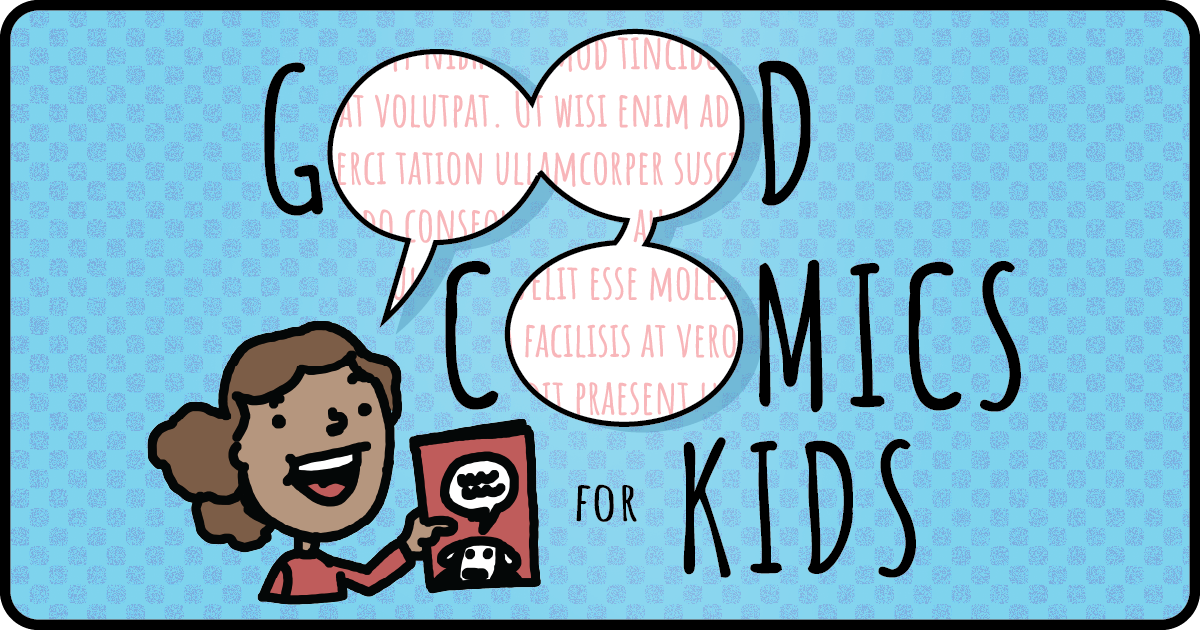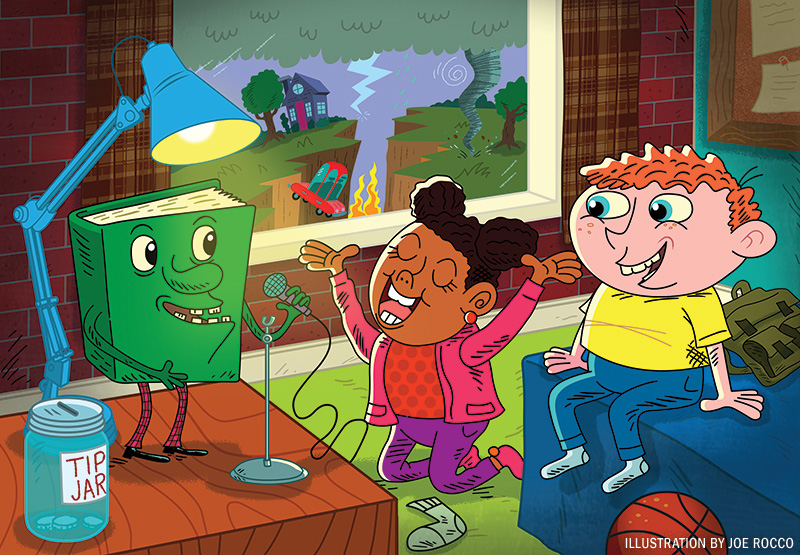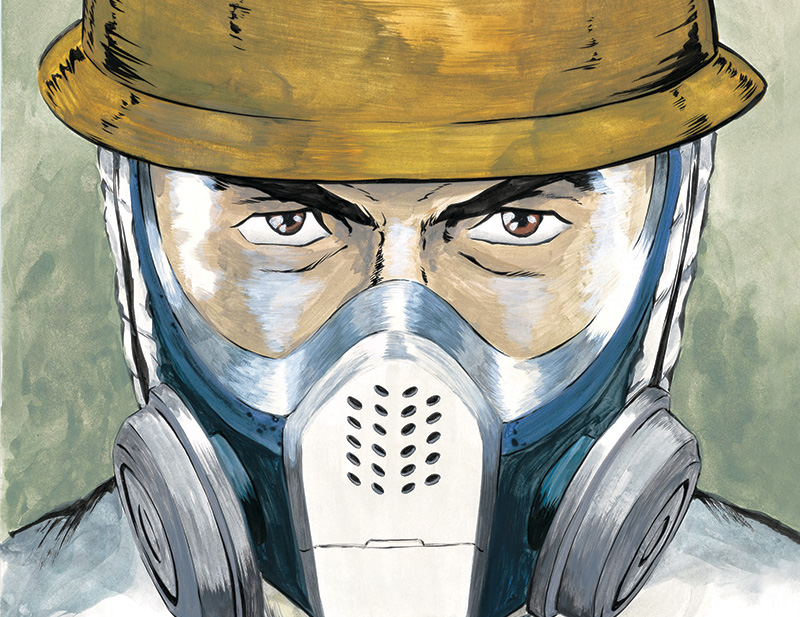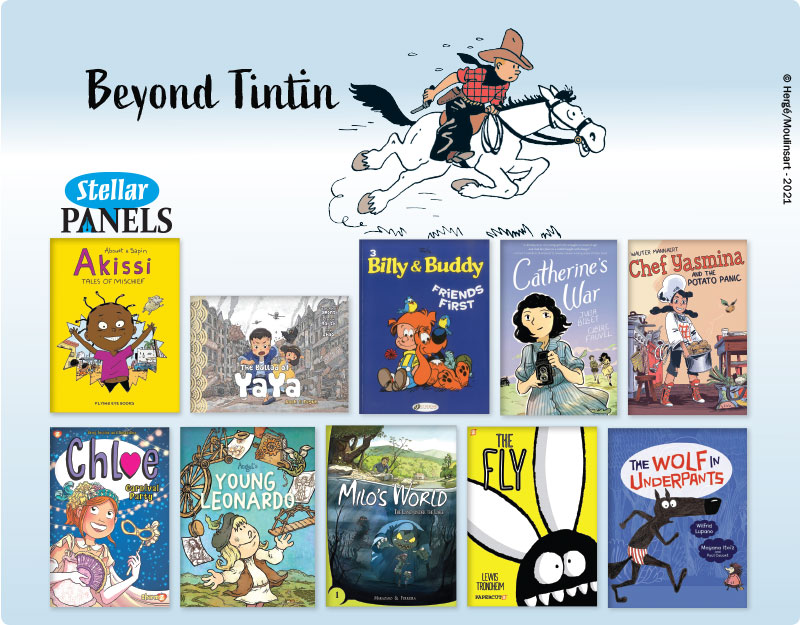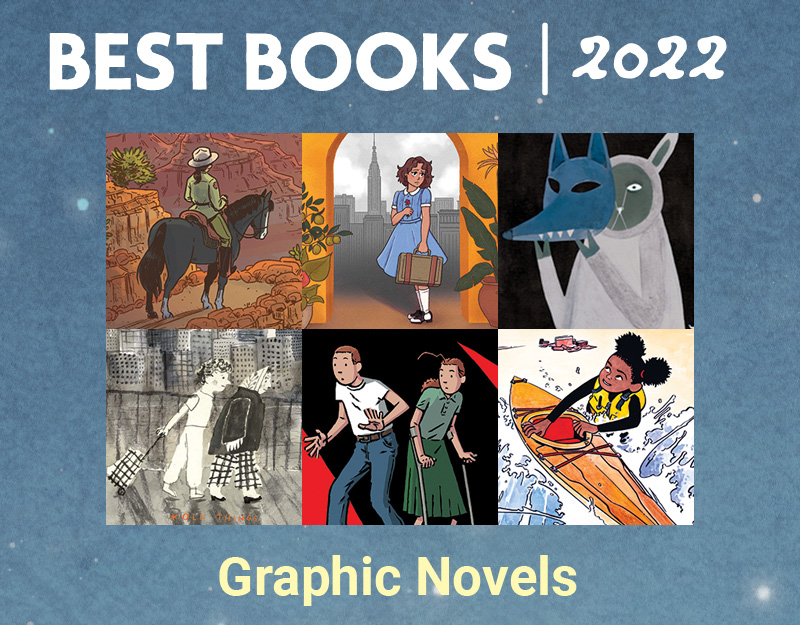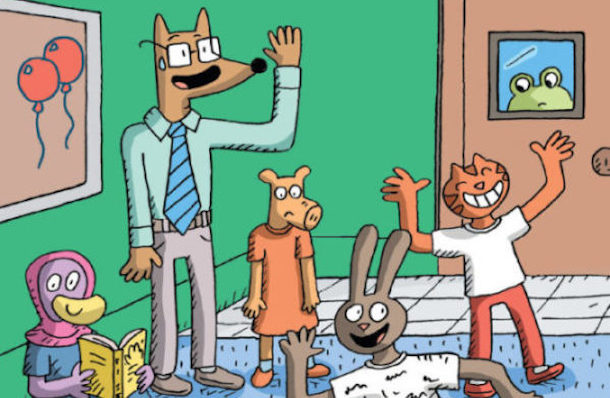
Interview: Aron Nels Steinke on ‘Mr. Wolf’s Class’
Today’s interview is a guest post by Alex Dueben, an accomplished comics journalist who will hopefully be a frequent contributor to Good Comics for Kids.
Aron Nels Steinke is the Eisner Award winning creator of The Zoo Box (2014) and the new graphic novel series from Scholastic’s Graphix imprint, Mr. Wolf’s Class. The new book comes out of Steinke’s day job, teaching fifth grade. The book details the first day of school both from the point of view of Mr. Wolf, a new fourth grade teacher, and many of his students who are dealing with a wide variety of issues from being the new kid at school to wanting everyone to be quiet and do work to mice who steal lunch.
 How do you balance teaching and making comics?
How do you balance teaching and making comics?
I think it must be very hard for most authors and artists to make a full-time living without another source of income. Most authors or artists I know have to hustle. They don’t always get to work on their pet projects. My teaching job, with its predictable routines and summers off, allows me to focus squarely on the artistic projects that I want to focus on. Right now that’s Mr. Wolf’s Class. Teaching is a humbling and grounding profession, and I find myself truly lucky to get to spend my day working with young people. My job is to empower, inform, inspire, and foster creativity, compassion, and resilience in my students.
ADVERTISEMENT
ADVERTISEMENT
How did this book start?
Mr. Wolf’s Class started out as an autobiographical comic strip about teaching called Mr. Wolf. My ideal audience was other teachers, but I found that kids really liked them, too. I started posting these strips online, and I had such positive feedback that I knew I was onto something. After drawing about 200 Mr. Wolf comic strips I finally felt I had the confidence to switch gears and to turn Mr. Wolf into Mr. Wolf’s Class and make it a graphic novel for kids. To be clear, Mr. Wolf’s Class, the graphic novel, is not a collection of the comic strips. It is an original graphic novel made with kids as my target audience.
Did you always envision the book as taking place in a single day and balancing the points of view of the teacher and many students?
I envisioned Mr. Wolf’s Class as a way for the reader to experience multiple perspectives and personalities. I really like that Robert Altman film, Gosford Park. The joy I feel in that film is the narrative shift in focus from one distinct character to another and the discovery of how their relationships all fit together. The casting and acting are all just so brilliant. I want my readers to experience Mr. Wolf’s Class in this manner. I’m also thinking about how the series will work several books in and how each book will complement the others. Kids read graphic novels so quickly and I’m eagerly anticipating the multi-book journey.
How do you work? Has your process changed over the years?
I used to start the writing process through sketching. My sketchbook was used to document any stray thought or experience I thought would be worthy for development later. I’d carry it around everywhere I’d go. Now that I’m working with Scholastic and I have the world of Mr. Wolf’s Class already created, I go right to word processing. Up until pretty recently, prose writing would intimidate me. But I really love writing scripts now. When I’m in the script-writing phase I will stop at a coffee shop after teaching and I’ll reread everything I’ve already written and then I’ll start typing as if the story is already there and I’m just uncovering it. I usually write one or two bad scripts that I have to trash before I get it halfway right. I’ll force myself to give up and start from zero and that’s when things start to click. The hardest part about writing is keeping the story focused and small. If I try and accommodate every “great” idea I have, the story winds up being overly complicated and unfocused.
Once I have my script approved by my editor, Cassandra Pelham Fulton, I sketch out the entire story at the same size I will do the final artwork. I assemble a PDF of the rough sketches and then submit that to Cassandra after I’ve done all my passes of edits myself. Once that is approved, I move on to penciling the whole book in a much more detailed and refined form. After that, I ink the entire book with a pen and then I move on to coloring the whole thing in the computer. After the “guts” of the book are finished, that’s when I start making cover sketches. The whole process of creating a graphic novel is very labor intensive. I really try not to think about how daunting and laborious it all is. I just have to work methodically, one page at a time. It gets done somehow. I obviously love it and I hope that joy comes across to the reader.
You’re making a sequel, is that right?
I actually finished working on Book #2, Mystery Club, last summer, but it won’t be published until February 26, 2019. I’m in the middle of working on Book #3, Lucky Stars, at the moment. Mystery Club follows a group of friends who have set out to solve the unsolved mysteries—some extraordinary, some mundane—of their school.
Mr. Wolf gives homework on the first day of school. I have to ask, are you that mean of a teacher?
Not only am I not that mean, I am also not organized enough to have homework ready on the first day of school. I’m usually setting up my classroom all the way up until the bell rings and then my students arrive.
Filed under: Graphic Novels, Interviews
About Brigid Alverson
Brigid Alverson, the editor of the Good Comics for Kids blog, has been reading comics since she was 4. She has an MFA in printmaking and has worked as a book editor, a newspaper reporter, and assistant to the mayor of a small city. In addition to editing GC4K, she is a regular columnist for SLJ, a contributing editor at ICv2, an editor at Smash Pages, and a writer for Publishers Weekly. Brigid is married to a physicist and has two daughters. She was a judge for the 2012 Eisner Awards.
ADVERTISEMENT
ADVERTISEMENT
SLJ Blog Network
2024 Books from Pura Belpré Winners
In Memorium: The Great Étienne Delessert Passes Away
Parsing Religion in Public Schools
Finding My Own Team Canteen, a cover reveal and guest post by Amalie Jahn
ADVERTISEMENT

